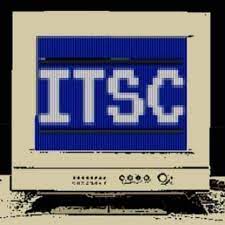The new stablecoin regulations in the US, Wyoming, and Hong Kong represent a significant shift toward ongoing monitoring rather than periodic compliance checks. The HKMA’s requirements now include:
- Regular customer information updates
- Continuous transaction monitoring for suspicious activities
- Periodic risk profile reviews
The penalties are substantial – up to $128,000 in fines and 7 years imprisonment – making compliance a critical business priority.
Expanding Scope Beyond Stablecoins
These KYC requirements will extend across all “par value” digital money categories:
- CBDCs (Central Bank Digital Currencies)
- Bank reserves and deposits
- Tokenized bank deposits
- E-money
- Stablecoins
Notably, traditional cryptoassets remain outside this framework since they lack liability backing and operate outside national currency systems.
Technology and trust are the Solutions
AI and real-time technology are becoming essential for meeting the demands required to go from today’s legacy systems and working practise to supporting the new era of information movement and compliance:
Current Challenges:
- Legacy banking systems with batch processing
- Fraud now represents 40% of UK crimes
- Need for 24/7 global transaction monitoring
- Meeting safe 24×7 payment processing internationally
Emerging Solutions:
- AI-powered verification and risk assessment
- Real-time data integration
- Cloud technology and APIs enabling instant compliance checks
- ISO 20022 standard expanding payment message detail
The Mobile Revolution
The shift from physical to digital identity verification reflects broader technological adoption and the catalyst is the smartphone. Since the early days of 2006, the UK has seen 60% of its bank and building societies closed. These have been replaced by
mobile banking apps which was possible as:
- 88 million active UK mobile subscriptions
- 89% of people use mobiles for online access
- Mobile banking with biometric authentication now standard
Stablecoins are heading in the right direction
Wyoming and HKMA (Hong Kong Monetary Authority) new Stablecoin Regulations is bringing information in real time and monitoring the par value that is judged by the currency peg performance. The Peg Analysis, for the existing US stablecoins
shows the $255 billion market is compliant. Stablecoin’s goal to add stability to the instrument is working as the five major currencies most often used in other countries shows:
|
Sep-23
|
Sep-25
|
Difference
|
Av change
|
|
|
USA
|
100
|
100
|
100
|
0%
|
|
euro
|
92
|
86
|
6
|
7%
|
|
GBP
|
79
|
74
|
5
|
6%
|
|
Japan
|
13900
|
14800
|
-900
|
-6%
|
|
China
|
690
|
710
|
-20
|
-3%
|
Stablecoins are designed to be like currency, and this shows up in redemption pricing. One of the major US Stablecoin issuers charges a minimum of a $1,000 or 0.01% of the amount whichever is the higher unpon redemption.
Strategic Implications
To meet Stablecoins embracement of being an electronic on par value currency it needs to perform like that currency. That means the money is in constant circulation. What is needed is a perpetual KYC model where compliance becomes continuous rather than
periodic.
The UK Government is thinking of reintroducing the 2006 act for a national ID. Since that time the mobile revolution has occurred and digital currency arrived. 100% UK adults aged 16-24 and 61% of children 8-11 have mobiles. 89% of people used their mobiles
to go online, (28% in 2009), and are used to verifying who they are through facial recognition. Banks accept facial and/or voice recognition as verification. None of this was about in 2006.
The stablecoin regulations and technology are setting a template for broader digital compliance reshaping how all financial institutions approach customer monitoring and verification.
The post Stablecoin Renaissance for Financial Services: By John Bertrand first appeared on TechToday.
This post originally appeared on TechToday.
